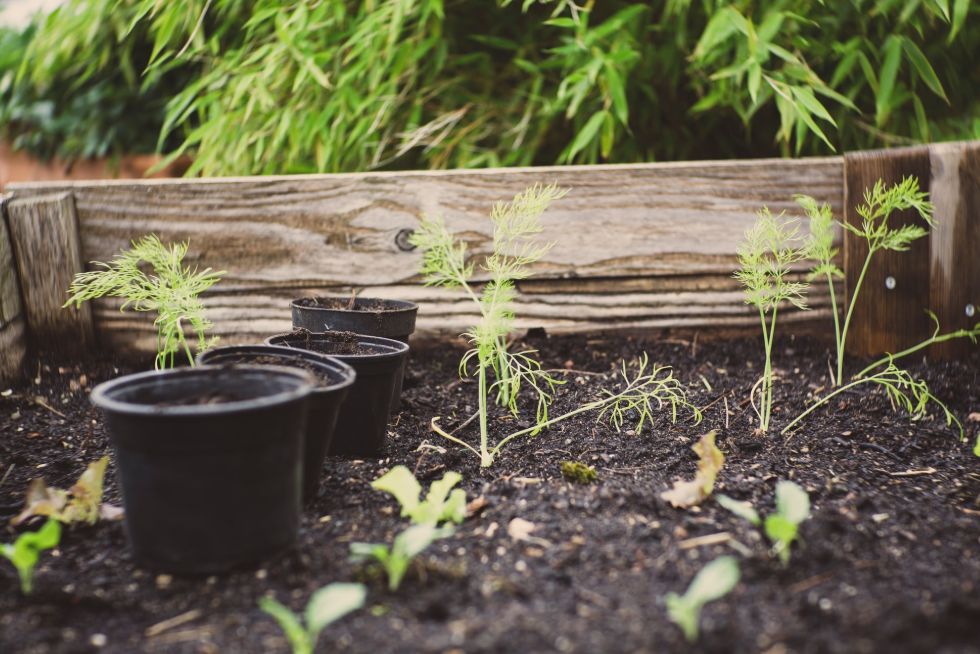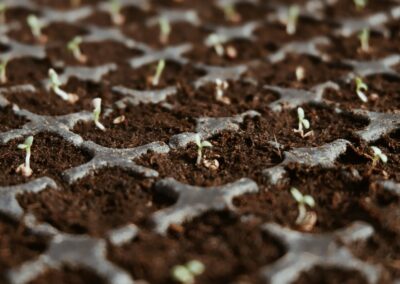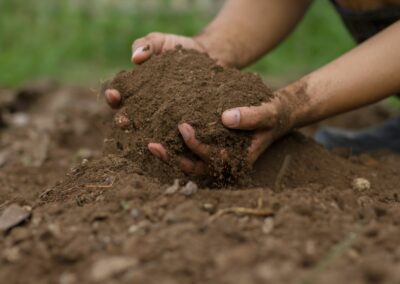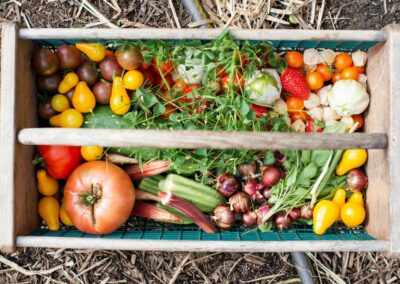You don’t actually need much space to grow your own food. In fact, you can grow salad in balcony hanging boxes or grow kale on your patio in a shallow homemade wooden box filled with soil. But if you’d like to put a bit more time and energy into experimenting and growing your own food, then it’s well worth your while dive into square-foot gardening.
In this square-foot garden, you can fit a whole plethora of vegetables and thus reap the benefits and glory of growing some of your own food. It’s fun, good for your budget and might make you feel empowered by making a small contribution to your own health.
The Origins of Small-Space Gardening
The popularization of the concept of square-foot gardening goes back about 40 years, although it’s probably been around much longer than that. It’s all about taking your designated gardening plot and dividing it into one-foot-long square sections to facilitate companion planting and thereby creating an intensive bountiful vegetable harvest.
In 1981, a retired civil engineer-turned gardener Mel Bartholomew coined the term and helped millions of hobby gardeners plant their first comprehensive and compact garden. Bartholomew’s foolproof gardening book has helped millions grow fresh produce in less space with less work. To order the latest version of the updated book, click here.
The ABCs of Square-Foot Gardening
If you have a wee bit more space than one square foot, as Bartholomew suggests in his book, try sectioning off a 4 x 4 foot bed (1.2 x 1.2 meter), then divide that into 16 one-foot squares and thus you have your grid for planting. You can get out your handy ruler and mark off the space and then use nails and string to create your own grid.
Although you can dig straight into the ground it’s best if you can construct a raised bed, where you can both plump it up with fresh fertile soil and better protect your veggies from nasty weeds. A raised bed doesn’t have to be necessarily a daunting or overwhelming task. You’ll need a shovel, some wooden planks or cinder blocks for the border, which should be able to support a height of about 6-to-18 inches of soil.
I encourage you to take an extra step to prevent unwanted weeds from popping up by lining the bottom of your raised bed with a plastic sheet (or weed-barrier landscaping fabric) to stop those weeds from even entering your gardening area. Then fill your raised bed with your choice of soil — fertile potting soil, or ¾ parts soil and ¼ part horse manure, or whatever your fancy. Finally, at every one-foot mark, pound in the nails and draw the string across to create your one-square meter grids.
Seeds, Water and Watch Them Grow
After adding your soil, and laying the grid, you might make a list of all the veggies that you’d like to plant, then, like packing a suitcase, start narrowing it down. Remove what you really don’t want or need or eat, and try to stick to what will fit efficiently.
Then, think of size — one cabbage seed will turn into a huge cabbage plant with huge leaves. Only one cabbage will fit in one square, for instance. Parsley, on the other hand, grows in bunches, so you could sprinkle in quite a few seeds and then later on, thin out the seedlings. Carrots and radishes grow underground, but they still need space beneath the earth to grow so try not to crowd them.
Perhaps go online and do a bit of research on companion planting, or check out this great page for information on just this, but within a square-foot garden.
Helping One Another Grow: Companion Planting
As the plants begin growing, you’ll learn what works and what doesn’t, and you’ll learn what grows better or worse next to another vegetable or flower. In each of your grid spaces, you’ll learn to rotate the plants for the purpose of varying harvest as well as combating pests.
You can also gain space with companion planting: by planting marigolds or dill next to your tomatoes, for instance, you may find that you can attract bugs like ladybugs that will devour the tomato-loving aphids. Radishes grow quicker than carrots, and by combining them in the same grid, you’ll always have something to nibble on.
The Wonders of Square-Space Gardens
Whether you’re planting directly in the ground or in a raised bed, you’ll find with square-foot gardening that you can grow almost as much food as a traditional backyard row-planted garden.
With square-foot gardening, the space is dense and compact, and all this neighborly contact will hopefully reduce the amount of weeds, as they’ll have no space to germinate and grow. If you do see weeds popping up, because your space is more manageable, you’ll be able to easily pluck them out before they take over.
Additionally, if you successfully companion plant, your vegetables and flowers will help to protect one another and thrive because of it. This close proximity will also lend itself to a reduction in diseases, as there’s not much space for any malady to spread. This is a win-win situation, so give it a try. I bet you’ll love it. Leave us some tips or tricks of your own in the comments below.








0 Comments